Sprints
Sprint Two
This sprint we continued to work on perfecting our current components (the card dealer, panning mechanism) as well as begin working towards our reach goals of developing a table and using LCD screens. We decided as a team that building a table where our card dealer would be integrated into, and the ability to have a modular number of players with an LCD Screen displaying information to be reach goals that were feasible given how much we accomplished already in sprint one.
Card Dealer
For this sprint, we designed a new roller that didn’t rely on parts from the PIE studio (new wheels and DC motor), and dealt cards from underneath the deck. This card dealer also featured an adjustable 3D-printed gate and a new weight arm that uses a ball bearing at the end as a weight, similarly to the final product. We found that the 3D-printed gate was not reliable, as the edge of the print wasn’t straight. Because of this, we switched to laser-cutting various gates to be used in the card holder, with gap sizes ranging from 0.5mm to 5mm. The cards also didn’t shoot out far enough during this sprint, so we moved the roller from the center of the cards closer to the gate, and likewise moved the weight to be over the roller instead of the center of the cards.

Picture of all card dealer iterations & gates
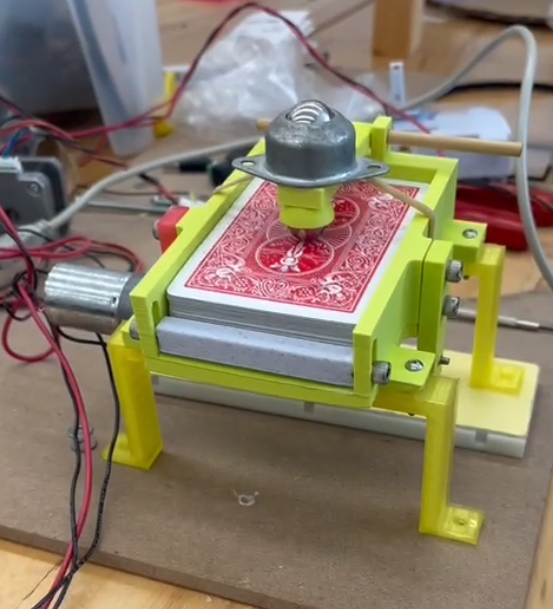
Card Dealer from Sprint 2
We still struggled with dealing one card at a time, mainly because our motor ran based on time delay. Telling the motor to run for a certain amount of time would often over-deal or under-deal the amount of cards because our control system had no way of knowing if the motor had spun enough to properly eject a card. Because of this, we decided that using an encoder for the next sprint would allow us to more consistently deal one card.
Pan Mechanism
To improve the pan mechanism we replaced the DC motor with a stepper motor and added the two support gears. The stepper motor worked to make the pan more precise and so did the support gears for leveling the platform. However, we ran into integration issues, specifically with where to route wires so they wouldn’t tangle as cards were dealt and the arduino interfering with the shooter wheels. To stop the tangling we planned to route the wires through a hole in the center of the platform and increase the height of the shooter legs so the shooter wheels would clear the arduino.
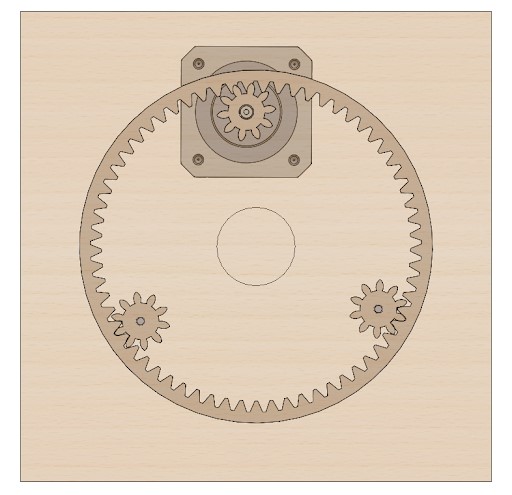
CAD of support gears made in Sprint 2
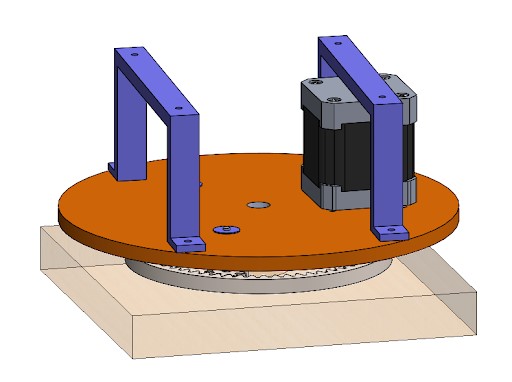
CAD of pan mechanism with Stepper Motor instead of DC motor
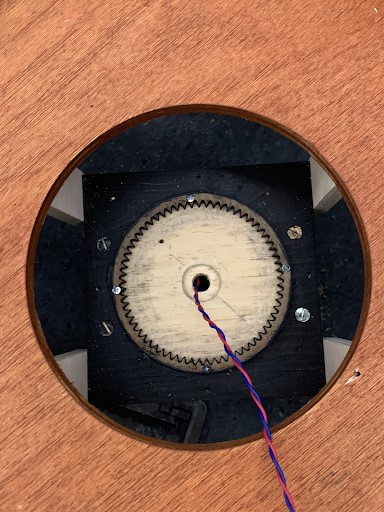
Hole for harnessing at the base
Initial Drafts
We had officially achieved our MVP very early into this sprint, so we began to consider implementing some of our reach goals, like an LCD screen, being able to control the number of players through buttons, a shroud, and a table. Thankfully, this project was very scalable so we could easily add new components to our project without worrying about too many dependencies. After we decided as a team to begin aiming for our reach goals, CAD designs were made (but not fabricated this sprint), design reviews amongst ourselves were conducted, and all firmware was refactored to using functions so that integrating these new reach goals would be painless on the firmware side.
We decided on the location of the LCD Screen and buttons to be embedded into the shroud, and the initial shroud CAD was drafted up. For the LCD Screen, we decided to purchase one that had an i2C driver since wiring would be much cleaner than using the default 16x2 LCD Screen which required over 9 wires to be connected.
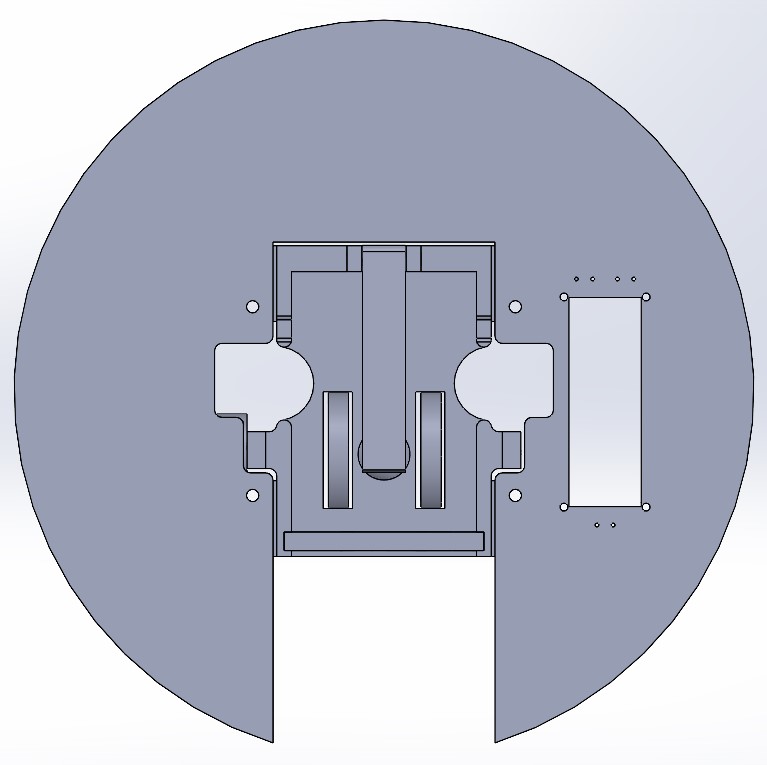
CAD of initial shroud with space for LCD Screen and buttons

16x2 LCD Screen using i2C
Table
The table design went through multiple iterations and design sprints before a final design was settled on and built. From the beginning, the main goals for the table were that it would:
- Be visually appealing
- Have the ergonomic design be specified to the teams body
- Act as a lower set, end table, rather than a chest high, sit up table
- Be able to integrate the automatic card dealer sleekly, easily, and effectively
In the process of creating this design, the team went through two design sprints. The first was to decide upon the overall design of the table structure and how it would integrate the card dealer. Six designs were proposed and a weighted decision matrix was created. The desire was to balance simplicity with a cool, effective design, so 5 different metrics were valued and weighted. After an overall design was decided upon, a design sprint was done to determine another important component of the project, the aesthetics. Multiple different options were presented, covering material from hardwood to felt tops, their costs were all determined, and a final design of felt was chosen because of its sleekness, ease of assembly, and cheapness.
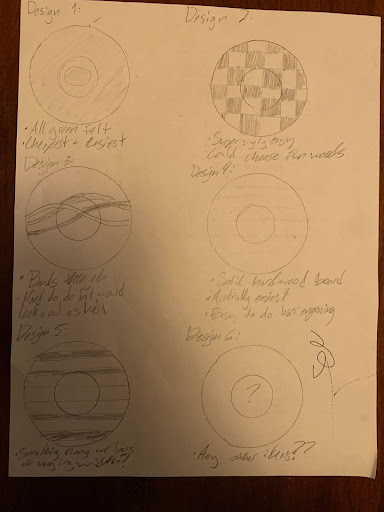
Sketches of possible table designs during brainstorming
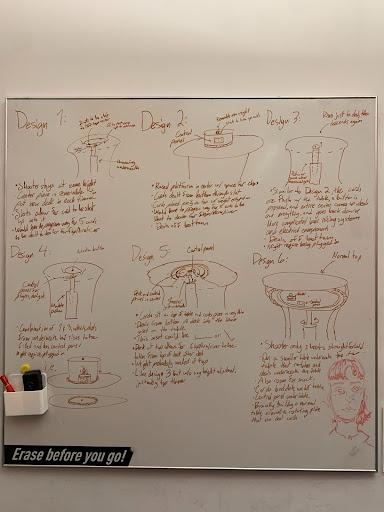
Official 6 designs were drafted to decide on
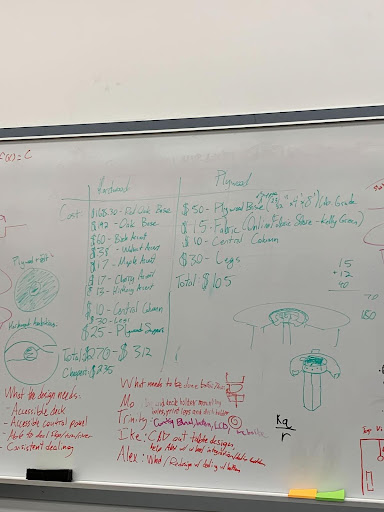
Cost Breakdown of the table before fabrication
While all of these reach goals began development this sprint in parallel to the actual card dealing and panning mechanism, none of these were completed nor integrated during this sprint.
For this sprint, this was our deliverable:
